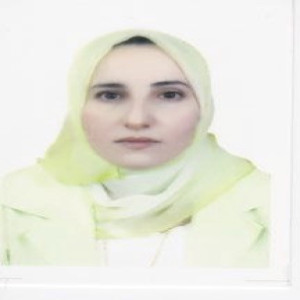البحوث العلمية
2013
MYCOBIOTA AND OCHRATOXIGENIC BLACK ASPERGILLI ASSOCIATED WITH DRIED SEEDS OF SUMAC (RHUS CORIARIA L.) GROWING IN IRAQ
2013-01
Pakistan Journal of Phytopathology (القضية : 1) (الحجم : 25)
Seeds and powder of sumac (Rhus coriaria L.) is well known spice and has been utilized by indigenous people at
Kurdistan region of Iraq in many popular meals as well as in many medicinal purposes. The mycobiota of twelve
sumac seed samples was examined after surface disinfection with sodium hypochlorite and plating on Dichloran
Rose Bengal Chloramphenicol (DRBC) medium. Fungi were isolated and identified to species level and percentage
contamination levels by fungi were calculated. The species of genera Apergillus Mich ex Fr.and Penicillium Link were
the most frequently isolated fungal species from sumac seeds. The other genera included Eurotium Link ex Fr.,
Monilia Pers ex Fr., Neocytalidium Crous & slippers, Rhizopus Ehrenb, Sclerocleista Subram, Trichoderma Pers ex Fr.
and Ulocladium Preuss. The highest isolation frequncy was displayed by the genera Aspergillus and Penicillium
(100%) followed by Rhizopus (50%). The broadest species spectrum was found in the genera Aspergillus and
Penicillium which were represented by 8 and 5 species respectively. Among eight species of Aspergillus, 4 species
were identified in Aspergillus section Nigri. These include A.carbonarius, A.foetidus, A.niger and A. tubingensis. The
most common species isolated were A. niger and A .flavus with a colonization percentage of 31.4 and 13.33%
respectively. Among the predominant species of Penicillium, P. camemberti and P. glabrum with 9.33% and 5.0%
iolation percentage respectively. Ochratoxigenic producing potential of two isolates of A. carbonarius was confirmed
using ELISA method. Levels of ohratoxin A (OTA) produced by the two isolates on yeast extract sucrose agar ranged
from 0.3-0.64 ng/g. Our study indicates possible hazards for humans upon consumption of sumac contaminated
seeds by toxigenic moulds
2010
Taxonomic study on Penicilli from soil in Kurdistan region of Iraq.
2010-05
Dohuk-University (القضية : 1) (الحجم : 13)
A taxonomic study on the genus Penicillium of the family Trichocomaceae (Eurotiales):Ascomycota inhabiting
soils in Kurdistan region of Iraq was carried out using phenotypical and cultural characteristics. Twelve taxa have
been identified . The identified species were P.aurantiogriseum, P.brevicompactum, P.camemberti, P.citrinum,
P.corylophilum, P.digitatum, P.echinulatum, P.funiculosum, P.glabrum, P.roqueforti, P.rugulosum and P.variabile. A
total of five species have been reported for the first time from Iraqi soil. The new records include P.aurantiogriseum,
P.camemberti, P.corylophilum, P.echinulatum, and P.variabile. A brief description based on cultural and morphological
characteristics is provided for each species. A dichotomous key in provided to facillate the identification of the
reported species.
2009
Taxonomic study on black aspergilli from soil in Kurdistan region of Iraq.
2009-10
Dohuk-University (القضية : 1) (الحجم : 12)
A taxonomic study of Aspergillus section Nigri (formerly A.niger group) inhabiting soil at Kurdistan region of Iraq was carried
out using phenotypical and cultural characteristics. Identification of the important and most common black aspergilli remains
problematic due to the variability of phenotypic features. Five species of Aspergillus section Nigri have been identified. These include
A.awamori, A.carbonarius, A.foetidus, A.japonicus, A.niger. The four former species are newly recorded for Iraqi soil. Abrief
description based on cultural and morphological characteristics is provided for each species. A key is provided to facilitate the
identification of the reported species
Taxonomic study on Aspergilli and their teleomorphs from soil in Northern Iraq
2009-04
Mosul-University (القضية : 22) (الحجم : 23)
The teleomorphic genera were Byssochlamys (2 species), Chaetosartorya (1 species), Neosartorya (1 species), Eurotium (2 species), and Emericella (2 species). The identified teleomorphs were: Byssochlamys fulva, B. nivea, Chaetosartoya cremea, Neosartorya fischeri, Eurotium amstelodami, E. chevalieri, Emericella nidulans and E.rugulosa.
الرجوع
